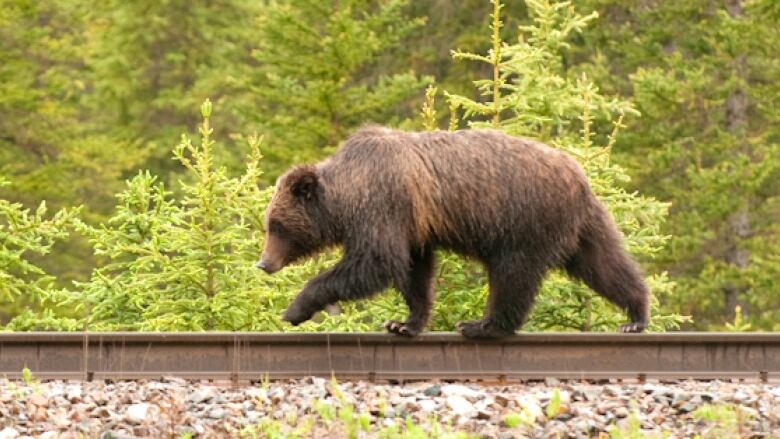'Disappointing' plan from Parks Canada, CP Rail does little to protect grizzlies: wildlife advocate
We should not settle for bear safety solutions, says Jim Pissot with WildCanada Conservation Alliance

A longtime wildlife advocatesays a Parks Canada and CP Railplan to protect bears from trains through the Rocky Mountains doesn't go far enough.
The study was launched in 2010 after bear deaths along the CP line through Banff National Park had grown to account for nearly one-third of all bear deaths in the park.
That study concluded that giving grizzlies better travel paths and sightlines along rail lines is the best way to keep the bears safe from trains. ParksCanada also plans to use prescribed burns to create more areas of good bear grazing away from train tracks.
But Jim Pissot, the director of WildCanada Conservation Alliance, told the Calgary Eyeopeneron Thursday he thinks the solutions are inadequate.
Disappointing plan
Q: You went to a meeting where Parks Canada and CP Rail fleshed out their plan. What did you make of what you heard?
A:I wish I could say I was encouraged, I was actually quite disappointed in what I heard and more disappointed in what I did not hear.
Q: Surely you heard something that made you think they've got a plan?
A: The variety of researchers did an excellent job in tackling a number of unknowns and flushing out some questions that we have regarding bear use, regarding foods along the sides of the track, regarding how bears behave when they see an approaching train. All that is very good for the big picture.
The disappointing part is that the bears are not going to wake up this spring to a noticeably better world.
First [Parks and CP] are going to use fire and thinning to create more attractive habitat away from the tracks. Second, they are going to tramp down and cut through some alternative walking routes and trails for bears and other animals. Third, they are going to work on vegetation management along the track side. There are number of attractive foods like dandelions and there will be an effort to remove them. Finally, there are grease stations along the track that are used to take grease on and off. There will be an electric mat placed around those pits, those products are toxic and harmful for bears.
In my estimation, these are not silver bullets. Each of them is very long-term. Their contribution to bear safety is unknown at this time. We've waited a long time for something substantial, and we are not seeing that at all.

Q: What about spilledgrain?
A: Grain is an attractant. Many dead bears are found with grain in their stomach.
I was surprised to read that 110 tonnes of grain are spilled annually within the Park. That's enough to feed 50 bears. We only have a little over 60 grizzlies in the park.
There was nothing mentioned about further reductions of that grain spilling, or cleaning train cars with grain spilt on its side, and nothing about improving inspections.
Q: Is there anything more that you think Parks and CP Rail should be doing that wasn't part of the report?
A:The Trans-Canada Highway was disastrous for animals before the fencing and bridges and underpasses were put in.
If the solution was to make more attractive habitat away from the highway, no one would have found that solution to be adequate.
So I think we should apply that same philosophy from the highway.
Q: Are you suggesting fencing the tracks?
A:In some areas. Reducing train speed has also been suggested.
What Parks Canada is embracing instead are attempts to draw bears away from the dangers of the tracks without reducing the dangers of the tracks themselves.
I think that's inadequate. It wouldn't have been satisfactory on the Trans-Canada, and we should not settle for this on the Canadian Pacific railway tracks as well.
- MORE ALBERTANEWS |'We are devastated':SymonsValley Ranch owners watch as market consumed by fire
- MORE RAILWAY NEWS |TSB finds train crash near Rogers Pass caused by communication breakdown
With files from the Calgary Eyeopener












_(720p).jpg)


 OFFICIAL HD MUSIC VIDEO.jpg)
.jpg)



























































































